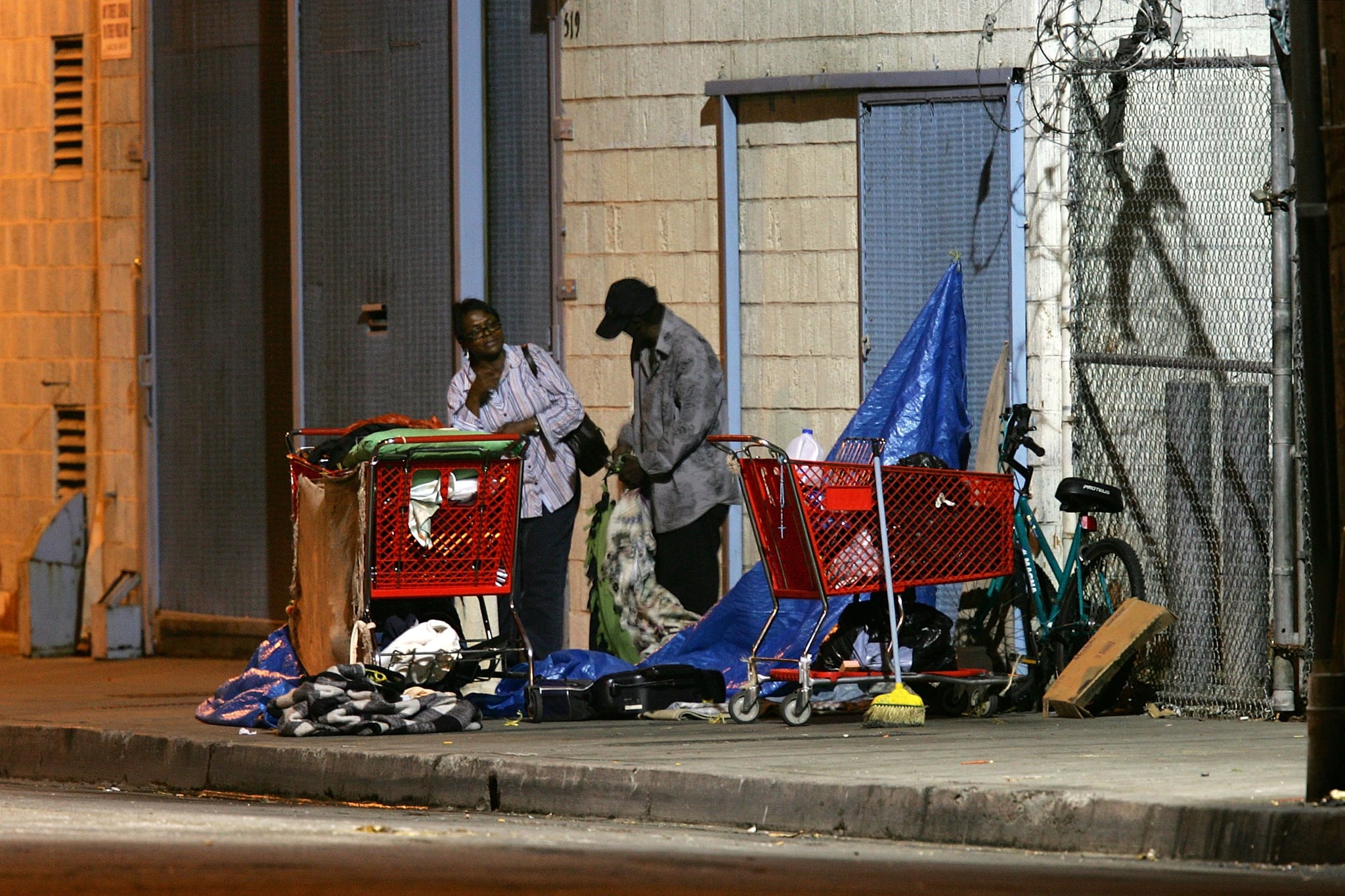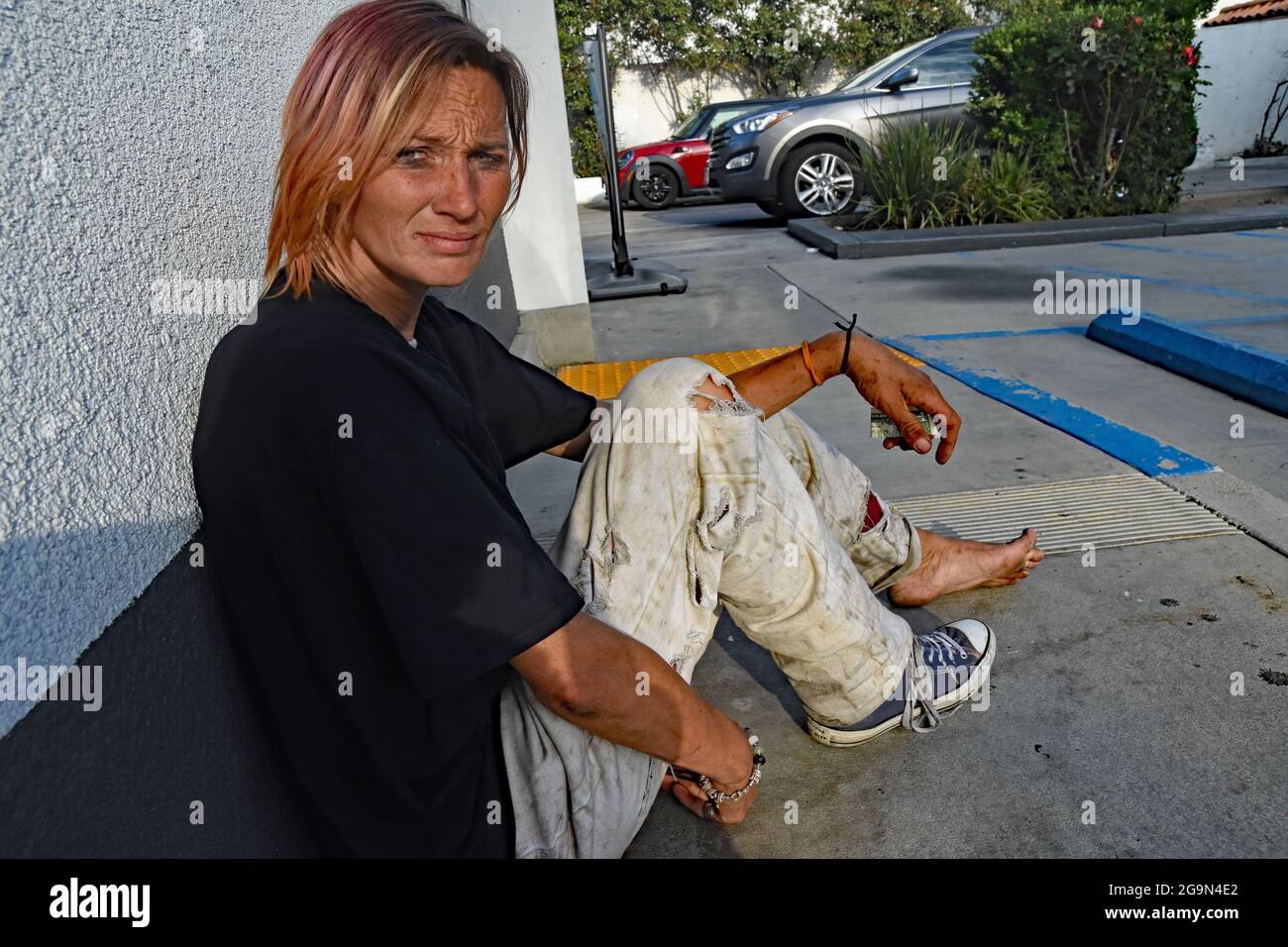

Hahn stated that he was "not going to prosecute individuals for not having a place to stay. Hahn responded that he would not prosecute people arrested in the planned sweeps. When Gates announced in May that the crackdown would resume, Los Angeles City Attorney (and future mayor) James K. Police and firefighters conducted a number of sweeps through the area but the plan was abandoned due to opposition by advocates for the homeless. In February 1987, LAPD chief Daryl Gates, backed by then-Mayor Tom Bradley, announced plans for another crackdown on the homeless on Skid Row. It was around this time that the demographics of Skid Row shifted from predominantly white and elderly to those there today (see: Demographics). Like those after World War II, many of them ended up on the streets. Throughout the 1960s and 1970s, many veterans of the Vietnam War found themselves drawn to Skid Row, due to the services and missions already in place there, and feeling outcast from other areas. Over forty years later, in March 2019, aged 84 and 72, they remained active in their work feeding Skid Row residents. ĭuring the 1970s, two Catholic Workers - Catherine Morris, a former nun, and her husband, Jeff Dietrich - founded the "Hippie Kitchen" in the back of a van. Skid Row was established by city officials in 1976 as an unofficial "containment zone", where shelters and services for homeless people would be tolerated. Many residents of the area found themselves homeless with the loss of half of the affordable housing provided by hotels. The total number of these units is estimated to have dropped from 15,000 to 7,500 over the following decade. With increased building codes during the '60s, owners of residential hotels found demolition to be more cost-effective than adhering to repairs.

By July 1960, the clearance program was said to be 87% complete in the Skid Row area. The city used administrative hearings to compel the destruction of nuisance properties at the expense of the owner.
#Skidrow california free#
Gilbert Morris, then superintendent of building, said that at that point the provision of free social services to the approximately one square mile of Skid Row cost the city over $5 million per year as opposed to the city average of $110,000 per square mile annually. The program was presented to property owners in the area as an economy measure. In the 1950s, the area "evolved into a place where alcoholics and other people down on their luck could get a meal and a bed." In 1956, the city of Los Angeles was in the midst of a program to "rehabilitate" Skid Row through the clearance of decaying buildings. Long time residents, however, were skeptical that the changes would last. Assistant Chief Joseph Reed, who claimed that "at least 50 percent of all the crime in Los Angeles originates in the Skid Row area," stated that there had been no "strong arm robberies" on Skid Row as late as one week after the raid. Horrall ordered what he called a "blockade raid" of the whole Skid Row area. In June 1947, Los Angeles Police Department (LAPD) chief Clemence B.
#Skidrow california movie#
It became "an enclave of small hotels, movie theaters and cheap eateries that served transient workers in seasonal industries and nearby railroads."

It supported saloons, residential hotels, and social services, which drew people from the populations they served to congregate in the area. By the 1930s, Skid Row was home to as many as 10,000 homeless people, alcoholics, and others on the margins of society. Huston Irvine, Los Angeles Times (March 26, 1939) 1880s through 1960s Īt the end of the 19th century, a number of residential hotels opened in the area as it became home to a transient population of seasonal laborers. Dapper Negroes, better dressed than any other vagabonds, wander by in riotous groups. Chattering Mexicans loiter on the steps leading up to a second-floor hotel. American Indians barter for forbidden whiskey. A few Chinese practically monopolize the hand laundry business, and Japanese the cheapest cafes and flophouses. A large, blond woman named Sunshine, born in Egypt, manages one of the cleaner rooming houses. A fat German runs a beer parlor and just across the street a dapper Frenchman ladles up 5-cent bowls of split pea soup. Jews, Greeks, and Italians in the doorways of pawnshops and secondhand clothing stores vie with one another to lure the unwary passer-by inside. The population is probably more motley than that in a similar district of any other American city.


 0 kommentar(er)
0 kommentar(er)
